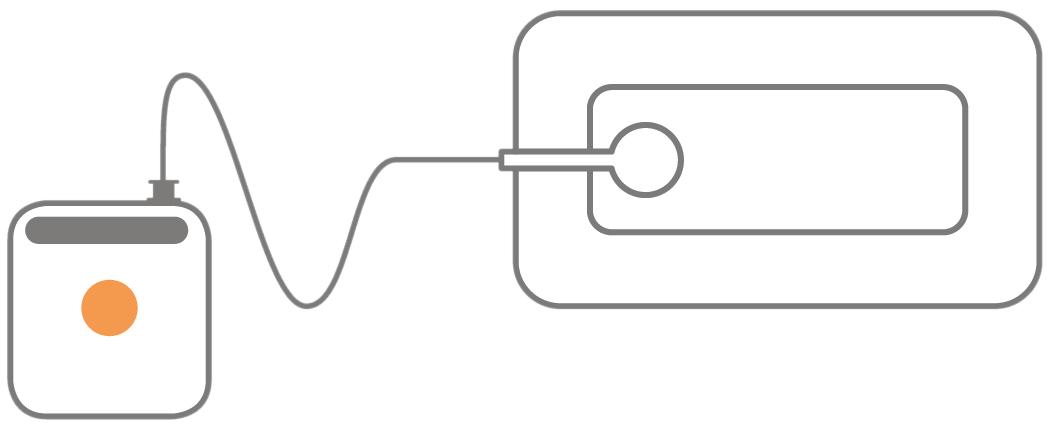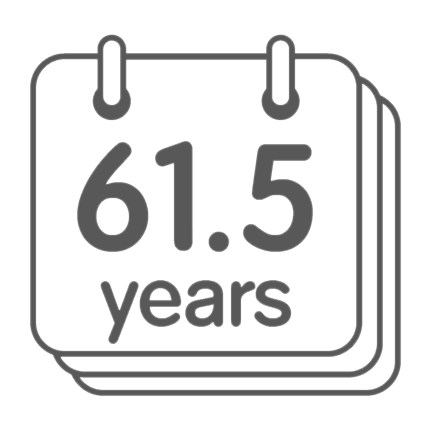Significant reductions in wound area, depth and volume with use of PICO Single Use Negative Pressure Wound Therapy System (sNPWT) versus traditional negative pressure wound therapy (tNPWT) in patients with lower extremity ulcers.
Kirsner R, et al. Wound Rep Regen. (2019)1
Why was the study performed?
This study evaluated whether PICO sNPWT was as effective as tNPWT at managing lower extremity ulcers.1
>6 million people
affected by chronic wounds in USA2
VLUs and DFUs
are common chronic wounds3
What was done?
A randomized, controlled study was performed at 18 centers in the USA and Canada1
For 12 weeks or until closure of the target ulcer, patients were treated with either PICO sNPWT or tNPWT (one of four similar devices)1
A filler was used for all wounds treated with tNPWT, but the investigator could choose whether to use a filler with PICO sNPWT1
Which patients were included?

164 patients enrolled1
with lower extremity ulcers (>4 weeks duration)
Males (63.4%)
Females (36.6%)
Mean age
104 with VLUs (2–36cm2)
60 with DFUs (0.5–10cm2)
How the populations were analyzed
Safety1
80 PICO sNPWT
84 tNPWT
Evaluate safety in all patients enrolled who received either treatment1
Per protocol (PP)1
64 PICO sNPWT
51 tNPWT
Show non-inferiority versus tNPWT in all patients treated as planned1
Intention to treat (ITT)1
80 PICO sNPWT
81 tNPWT
Confirm superiority versus tNPWT in all patients who attended a follow up visit1
What were the main results?
**These statistics come from two patient populations, which include outliers in the dataset.
ITT population (n=161)
Wound closure
Twice as many wounds closed
at 12 weeks with PICO sNPWT than tNPWT
(45 vs 22%; p=0.002; ITT population)1
What did it demonstrate?
Use of PICO sNPWT helped to significantly reduce wound area, volume and depth compared with tNPWT in patients with lower extremity ulcers over 12 weeks.1 More patients achieved wound closure1 and overall satisfaction was greater4 with PICO sNPWT than with tNPWT in this randomized controlled study.
![]()
The PICO System
saved an estimated $7K per patient over 12 weeks vs. traditional NPWT on lower extremity wounds.3*†‡
* n=161; † n=52; ‡ Based on cost modeling analysis compared with tNPWT
PICO sNPWT is not indicated for compression therapy.
Application of PICO 7 sNPWT on a leg ulcer
- Kirsner R, Dove C, Reyzelman A, Vayser D, Jaimes H. A prospective, randomized, controlled clinical trial on the efficacy of a single-use negative pressure wound therapy system, compared to traditional negative pressure wound therapy in the treatment of chronic ulcers of the lower extremities. Wound Repair Regen. 2019 Sept;27(5):519-529.
- Powers JG, Higham C, Broussard K, Phillips TJ. Wound healing and treating wounds: Chronic wound care and management. J Am Acad Dermatol. 2016;74(4):607-25;
- Werdin F, Tenenhaus M, Rennekampff HO. Chronic wound care. Lancet. 2008 9;372(9653):1860-1862;
- Kirsner R, Dove C, Reyzelman A, Vayser D, Jaimes H. Randomized controlled trial on the efficacy and acceptance of a single-use negative pressure wound therapy system versus traditional negative pressure wound therapy in the treatment of lower limb chronic ulcers (VLU and DFU). Poster presented at the 10th Annual Abu Dhabi Wound Care Conference, March 23–24, 2019. Abu Dhabi, United Arab Emirates.
- Kirsner RS, Delhougne G, Searle RJ. A cost-effectiveness analysis comparing single-use and traditional negative pressure wound therapy to treat chronic venous and diabetic foot ulcers. Wound Manag Prev. 2020;66(3):30-38.
* Joy, H et al. A collaborative project to enhance efficiency through dressing change practice. Journal of Wound Care 2015;24(7):312,314-7



















